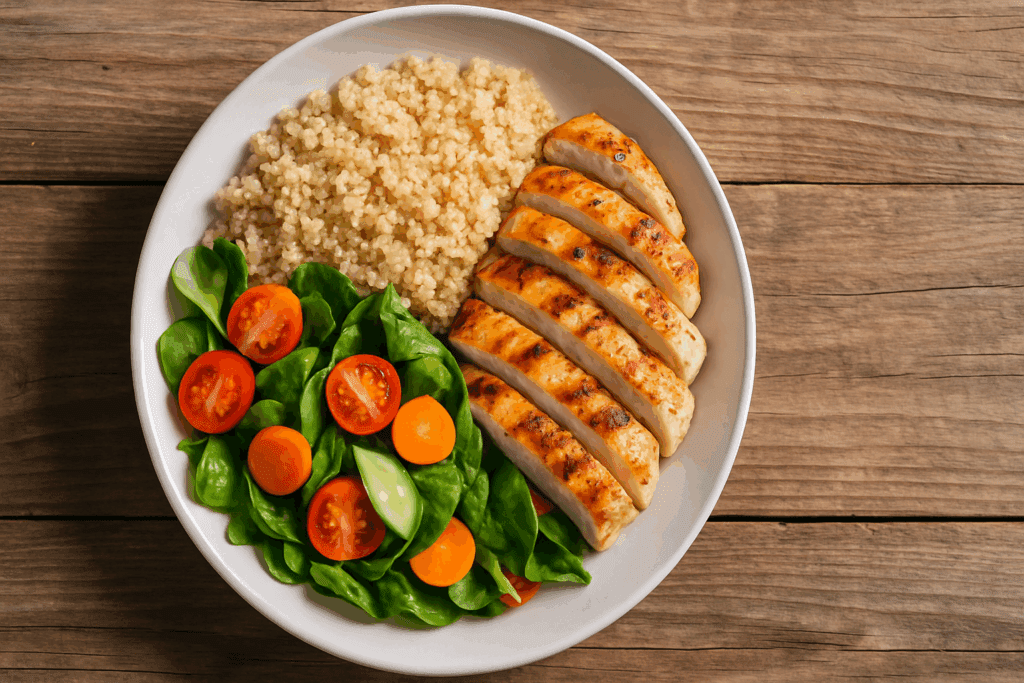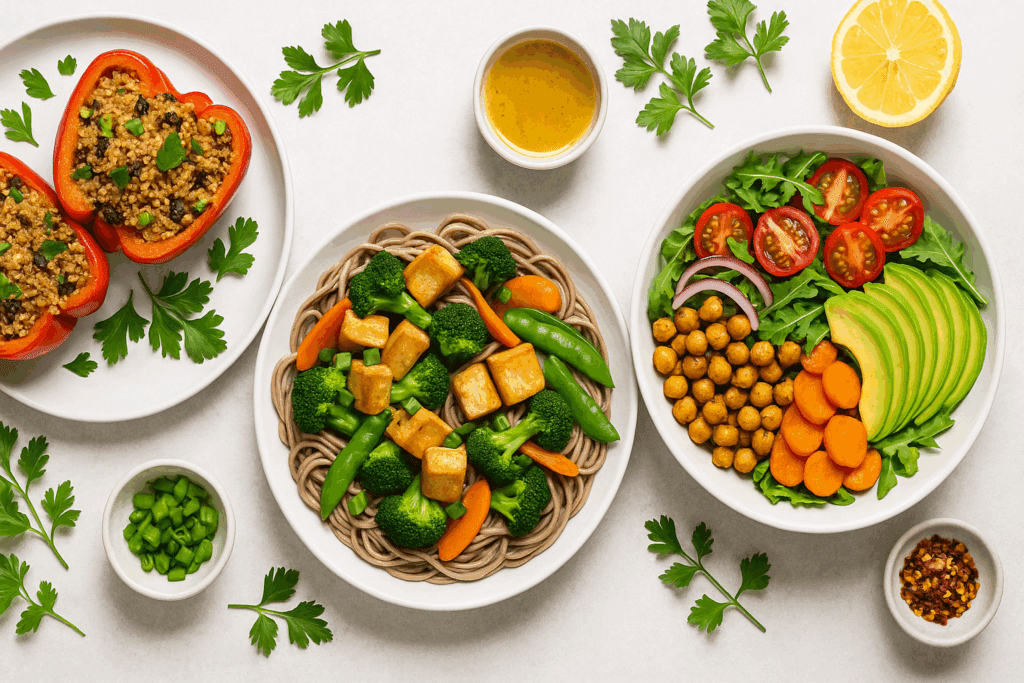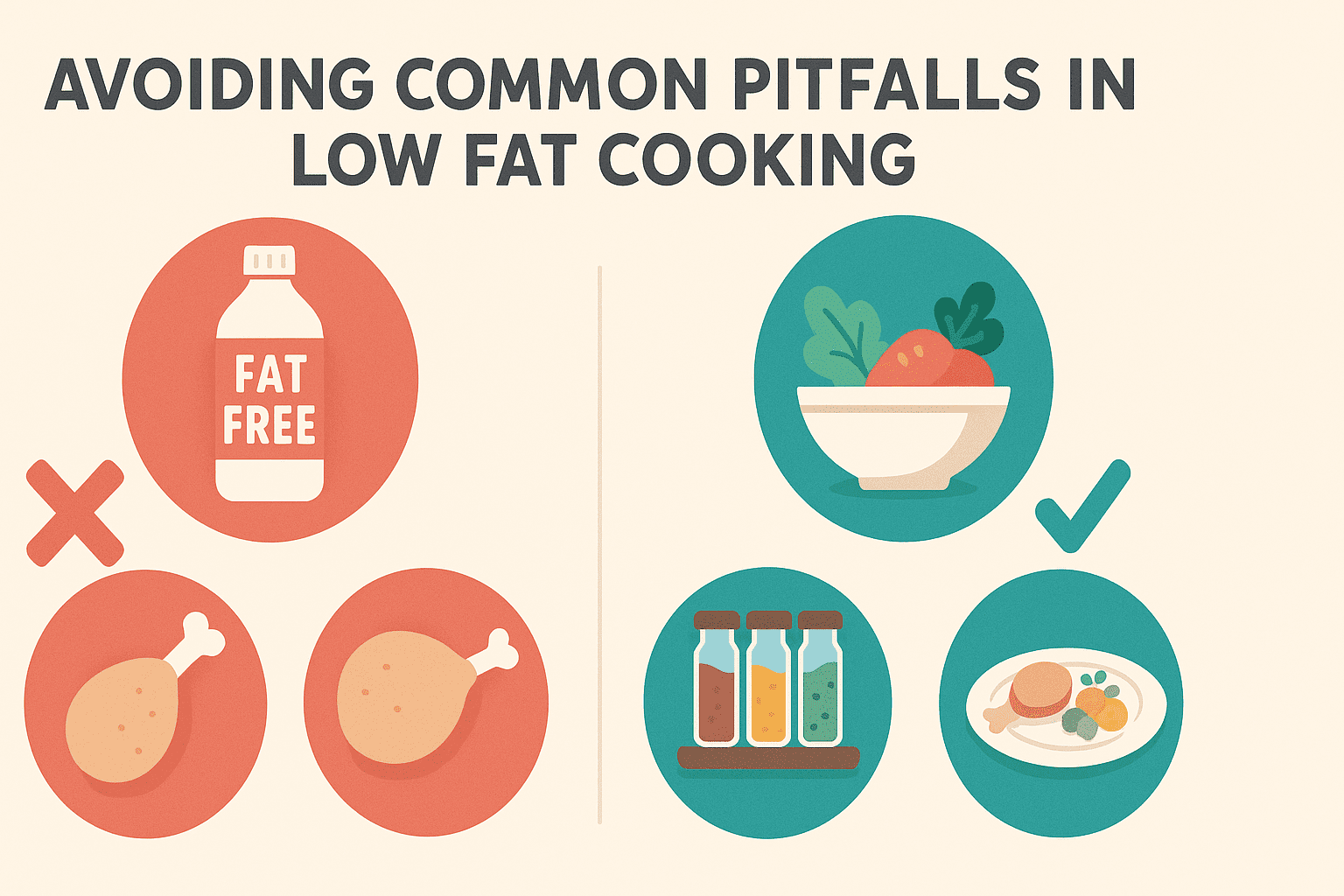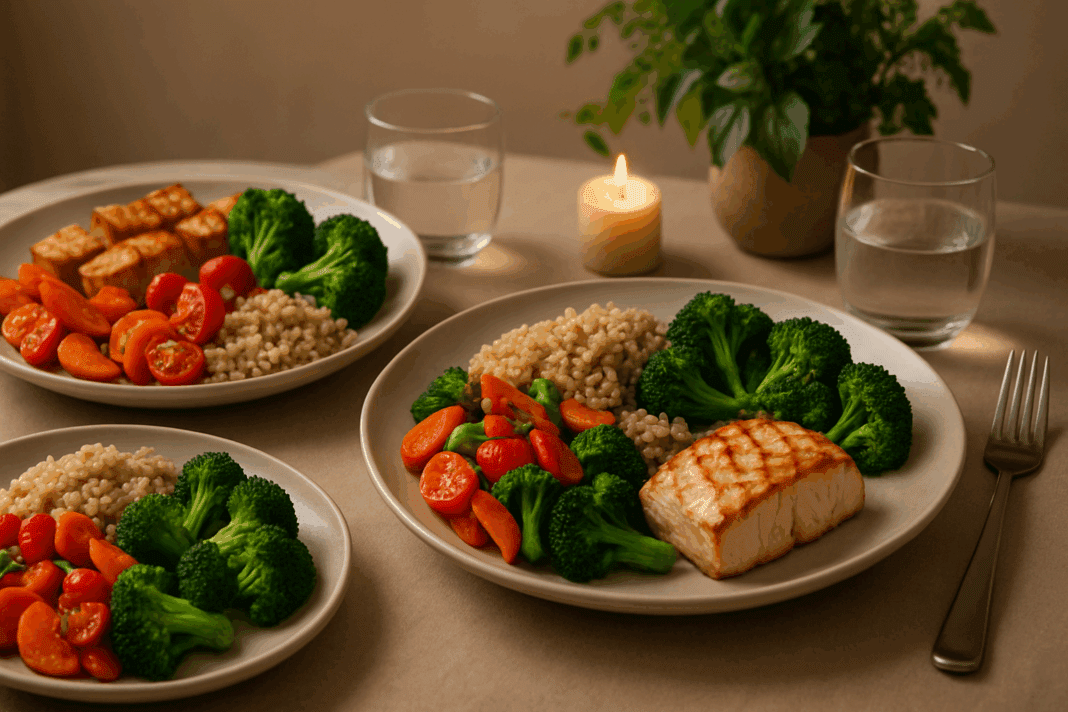A Fresh Perspective on Low Fat Dinners for Two: Why Nutritional Simplicity Matters
In a fast-paced world filled with takeout temptations and ultra-processed meals, finding time to create nutritious, low-fat dinners for 2 can feel like a small miracle. Yet prioritizing simple, health-conscious meals is one of the most powerful choices couples or roommates can make together. Not only do low-fat dinner recipes for 2 support weight management and cardiovascular wellness, but they also foster mindful eating habits, strengthen relationships through shared cooking experiences, and reintroduce us to the natural flavors of whole, nutrient-dense ingredients. The value of these benefits extends far beyond the plate—they contribute to an overall lifestyle shift toward long-term well-being.
Low-fat meals are often misunderstood as bland or unsatisfying, a reputation that stems more from outdated diet fads than nutritional science. In reality, healthy low-fat dinners can be vibrant, satisfying, and deeply flavorful when built around high-quality, whole foods. The secret lies in understanding how to balance macronutrients, embrace variety, and elevate basic ingredients with simple culinary techniques. Rather than rely on heavy oils, cream-based sauces, or fried preparations, low-fat cooking highlights the inherent richness of legumes, grains, vegetables, herbs, and lean proteins.
For two-person households, the added advantage of portion control cannot be overstated. Crafting low-fat dinner recipes for 2 allows for thoughtful calorie and fat regulation, reducing the tendency toward overeating while also minimizing food waste. This article explores expert-backed strategies for designing these meals, highlights practical cooking tips, and shares creative ideas that bring low-fat dining to life without compromising satisfaction or taste. Whether you’re cooking for a partner, a friend, or simply preparing ahead with leftovers in mind, this guide offers an in-depth look at how to make healthful eating both accessible and enjoyable.
You may also like: Smart, Simple Recipes for a Balanced Diet: Expert-Backed Healthy Food Dishes to Support Everyday Wellness

Why Prioritizing Low Fat Dinners for 2 Enhances Overall Health
When we talk about low-fat dinners in the context of health, it’s important to clarify that the focus is not on extreme fat avoidance, but on balancing fats in a way that supports optimal physiological function. Scientific consensus has long acknowledged the role of healthy fats—like those from avocados, nuts, and seeds—in supporting brain health, hormone production, and nutrient absorption. However, excessive intake of saturated and trans fats from processed meats, fast food, and fried dishes is strongly linked to elevated LDL cholesterol, increased inflammation, and a higher risk of cardiovascular disease.
By planning healthy low-fat dinners for 2, individuals can take proactive control over these dietary risks. Instead of eliminating fat altogether, meals can feature modest amounts of heart-healthy oils or nuts while emphasizing high-fiber foods, antioxidant-rich vegetables, and lean proteins such as lentils, tofu, or fish. This balance not only aligns with evidence-based dietary guidelines from organizations like the American Heart Association and the World Health Organization but also enables satiety and flavor without relying on excessive calories.
The beauty of cooking for two is the built-in support system it provides. When partners commit to preparing low-fat meals together, they reinforce accountability and build lasting habits that are harder to sustain alone. Studies even show that dietary changes are more likely to stick when shared among household members. This dual commitment to health, combined with the pleasure of a shared meal, creates a holistic approach to wellness that encompasses physical nourishment, emotional connection, and cognitive satisfaction.

Foundations of a Balanced Low Fat Dinner for Two
Designing low fat dinner recipes for 2 begins with a solid understanding of meal composition. A well-balanced plate includes a variety of textures, colors, and nutrients that work in harmony to support the body’s needs while also satisfying the palate. The goal is to create meals that are low in added fats and oils but rich in fiber, protein, vitamins, and minerals.
A strong base often includes complex carbohydrates such as quinoa, brown rice, whole wheat pasta, or sweet potatoes. These ingredients provide slow-burning energy and help maintain stable blood sugar levels throughout the evening. Next, colorful non-starchy vegetables such as broccoli, bell peppers, carrots, and spinach contribute both volume and micronutrient density, enhancing feelings of fullness without excessive calories.
Protein plays a central role in low fat dinner recipes for 2, particularly in ensuring satiety and metabolic function. Lean plant proteins like legumes, lentils, tempeh, or tofu are excellent choices. For those who include animal products, grilled fish, skinless poultry, or eggs can be integrated sparingly to add variety without excess fat. Seasoning with herbs, spices, citrus, and vinegar instead of heavy sauces or butter keeps the fat content low while boosting flavor complexity.
Another key principle is portion control. Recipes tailored specifically for two help prevent overindulgence, especially with calorie-dense foods, and allow better control over ingredients and nutritional balance. This intentional structure also reduces the need for guesswork in measuring or recalculating large-scale recipes, making it easier to remain consistent in healthy eating efforts.

Simple Cooking Techniques That Make a Big Impact
One of the greatest misconceptions about healthy cooking is that it’s time-consuming or complex. In truth, many of the most effective low-fat cooking techniques are also the simplest. Steaming, roasting, grilling, and sautéing with minimal oil are all excellent methods for preserving the integrity of ingredients while limiting unnecessary fat content.
Steaming is especially useful for vegetables, allowing them to retain their crispness and nutritional value without added oils. Roasting, on the other hand, can develop deeper flavors through caramelization, particularly when using root vegetables or chickpeas tossed lightly with herbs and a touch of olive oil. Grilling imparts a smoky richness without requiring high-fat marinades or coatings, making it ideal for lean proteins or vegetable skewers.
For stovetop cooking, a high-quality nonstick pan or cast-iron skillet can reduce or eliminate the need for added oils. When moisture is needed, water, broth, or citrus juices can replace oil during sautéing to soften onions or garlic. Techniques like braising or slow cooking with tomato-based sauces also deliver moisture and flavor without relying on cream or butter.
Beyond cooking methods, plating also plays a role in the sensory enjoyment of meals. Serving low fat dinners for 2 on smaller plates, using garnishes like chopped herbs or citrus zest, and incorporating vibrant colors enhances visual appeal, making each meal feel like a treat rather than a dietary compromise. When food looks appealing, the brain registers it as more satisfying—even before the first bite.

Creative and Delicious Low Fat Dinner Recipes for 2
Bringing the theory to life, here are several ideas for low fat dinner recipes for 2 that balance taste, nutrition, and ease of preparation. Each is designed to highlight whole ingredients while keeping saturated fats to a minimum and maximizing plant-based nutrients.
One standout option is a quinoa and black bean stuffed bell pepper. Begin by cooking quinoa with vegetable broth, then stir in black beans, diced tomatoes, corn, and fresh cilantro. Spoon the mixture into halved bell peppers and bake until tender. Topped with a squeeze of lime and avocado slices (used sparingly for heart-healthy fats), this dish is vibrant and deeply satisfying.
Another winning choice is a vegetable stir-fry with tofu. Use a nonstick pan or wok to sauté broccoli, snap peas, mushrooms, and carrots in low-sodium soy sauce, garlic, and ginger. Add cubed tofu and finish with a splash of rice vinegar. Serve over brown rice or soba noodles for a complete, fiber-rich meal with protein, antioxidants, and healthy carbs.
A third idea is roasted chickpea salad bowls. Roast canned chickpeas tossed with cumin and paprika until crispy, then combine with mixed greens, cherry tomatoes, cucumber, and shredded carrots. A homemade vinaigrette of lemon juice, mustard, and balsamic vinegar replaces creamy dressings, and a sprinkle of sunflower seeds adds crunch without heaviness. This meal is light yet substantial, ideal for warmer evenings.
These low fat dinner recipes for 2 prove that with a little creativity and planning, healthy eating can be both simple and indulgent. The focus shifts from what’s missing (excess fat) to what’s included—flavorful ingredients, dynamic textures, and powerful nutrients that fuel the body and delight the senses.

The Role of Meal Planning and Batch Cooking
Meal planning and batch cooking aren’t just time-saving strategies—they’re powerful tools for reinforcing health goals and minimizing the temptation of last-minute unhealthy choices. When cooking low fat dinners for 2, a bit of foresight can make a major difference in dietary consistency, particularly for busy professionals or families balancing multiple schedules.
By mapping out meals for the week, individuals can streamline grocery shopping, reduce food waste, and eliminate daily stress over what to prepare. Planning low fat dinner recipes for 2 also ensures that ingredients are used efficiently, with one item often serving multiple meals. For instance, a batch of cooked lentils can be used in tacos, salads, and soups throughout the week.
Batch cooking, in particular, allows for the preparation of versatile components—like roasted vegetables, cooked grains, or marinated tofu—that can be assembled into quick dinners with minimal effort. Portioning these elements into reusable containers keeps meals organized and encourages mindful serving sizes. Leftovers from dinner can be easily converted into lunch the next day, saving both time and money.
For those new to meal planning, starting with just three planned dinners per week can help build momentum. Over time, patterns emerge, preferences solidify, and the process becomes second nature. When meals are planned with nutrition in mind, they become more than food—they become a ritual of self-care and intentional living.

Avoiding Common Pitfalls in Low Fat Cooking
Despite the best intentions, low-fat meals can fall short when certain common mistakes are made. One of the most frequent pitfalls is over-reliance on processed “fat-free” products. While these may seem like convenient solutions, many are loaded with added sugars, sodium, or artificial additives that undermine overall health goals. Whole, unprocessed foods are a far better foundation for any nutritious meal plan.
Another mistake is under-seasoning. When fat is reduced, flavor must be replaced in other ways. Relying solely on salt or bland cooking methods can make meals unappealing, leading to boredom or cravings for richer fare. Instead, robust herbs, fresh citrus, infused vinegars, and even umami-rich ingredients like miso or nutritional yeast can deliver depth without the added fat.
Portion distortion is also worth watching. Even when meals are healthy, large portion sizes can result in excess caloric intake. Low fat dinners for 2 should reflect true serving sizes, not supersized restaurant-style plates. Using measuring tools at first can help retrain the eye and prevent unintentional overeating.
Lastly, skipping fat entirely can lead to nutrient malabsorption and unsatisfying meals. A modest inclusion of healthy fats—such as a teaspoon of olive oil or a few nuts—can improve the absorption of fat-soluble vitamins like A, D, E, and K. It’s about smart inclusion, not total exclusion.

How Low Fat Dinners for 2 Support Sustainable Weight Management
Weight management is a complex interplay of metabolism, hormones, lifestyle, and emotional factors. Still, dietary patterns play a crucial role, and low-fat meals—especially when crafted thoughtfully—can support healthy weight goals without restrictive dieting. When people prepare low fat dinner recipes for 2 using whole foods and portion control, they naturally limit excess calories while still feeling nourished and satisfied.
One of the most important aspects of successful weight management is consistency. Fad diets often lead to rapid weight loss followed by rebound gain, while sustainable approaches emphasize moderation and balance. Low-fat meals contribute to this strategy by offering high volume and fiber with fewer calories, making it easier to maintain a calorie deficit without hunger or deprivation.
Moreover, meals shared between two people create accountability and emotional reinforcement. Cooking together, discussing food choices, and reflecting on progress are all acts of partnership that support long-term success. This relational aspect is often overlooked in nutritional discussions but is vital for motivation and adherence.
Low-fat dinners also tend to be easier on digestion, promoting better sleep and metabolic function overnight. Heavy, greasy meals consumed late in the day can disrupt hormonal cycles and interfere with restful sleep, further complicating weight regulation. In contrast, light and balanced dinners support circadian rhythms and overall metabolic harmony.
Bringing Joy Back to the Dinner Table
Perhaps the most compelling reason to embrace low fat dinners for 2 is the sense of joy and connection they can bring. In a culture where food is often rushed, commodified, or guilt-laden, reclaiming the kitchen as a space of nourishment and creativity can be profoundly healing. Meals cooked with intention, even when simple, are an act of care—for ourselves and for those we share them with.
The dining table becomes more than a place to eat—it becomes a site of conversation, reflection, and presence. Healthy eating no longer feels like a chore or sacrifice but a deeply rooted lifestyle. This emotional resonance reinforces behavioral patterns and reshapes our relationship with food.
Even the smallest rituals—lighting a candle, plating food with care, expressing gratitude before a meal—can elevate the experience and make low-fat cooking feel luxurious. These small acts remind us that health is not just a biological state, but a holistic one encompassing mind, body, and spirit.
Frequently Asked Questions: Expert Insights on Low Fat Dinners for 2
1. What are some advanced techniques for enhancing flavor in low fat dinner recipes for 2 without adding extra oils or fats?
One of the most effective strategies is layering natural umami sources to build complexity without relying on fat. Ingredients like miso paste, tomato paste, mushrooms, and nutritional yeast can all amplify depth in low fat dinners for 2. Another technique is blooming spices in a small amount of broth or citrus juice to extract their essential oils—this approach mimics the flavor-carrying function of fat. Roasting vegetables at high heat can also intensify their natural sweetness and texture. Finally, experimenting with fermentation, like kimchi or pickled onions, adds brightness and dimension, transforming simple low fat dinner recipes for 2 into gourmet meals.
2. How can low fat dinners for 2 be adapted for people following specific therapeutic diets, such as DASH or Mediterranean plans?
Low fat dinner recipes for 2 can be easily customized to align with evidence-based dietary approaches like DASH (Dietary Approaches to Stop Hypertension) or the Mediterranean diet. For DASH, the focus is on reducing sodium while increasing potassium-rich produce and lean proteins—so swapping salt-heavy sauces for citrus or herb-based dressings is essential. For Mediterranean-style adaptations, dishes can incorporate legumes, whole grains, and small amounts of olive oil, with fish or seafood served 1–2 times weekly. Herbs like oregano, basil, and rosemary elevate both taste and nutrition, ensuring that low fat dinners for 2 remain exciting and health-supportive. These modifications not only preserve the integrity of the meal plan but also enhance heart and brain health.
3. What psychological benefits can arise from regularly cooking and sharing low fat dinner recipes for 2?
The act of cooking and sharing meals—especially when done intentionally—fosters mindfulness, emotional bonding, and a greater appreciation for food. For couples or roommates preparing low fat dinners for 2, this shared activity becomes a grounding ritual that reduces stress and cultivates presence. Research in behavioral nutrition shows that eating together can promote healthier dietary choices, enhance mood, and even reduce the likelihood of emotional eating. Additionally, mastering new low fat dinner recipes for 2 can boost culinary confidence and provide a sense of achievement, particularly when meals turn out delicious and visually appealing. Over time, this habit can reshape one’s relationship with food from something transactional to something joyful and deeply nourishing.
4. Are there any common misconceptions about fat in low fat dinners for 2 that might lead to nutritional imbalances?
Yes, one common myth is that all fat is harmful, leading some people to avoid even essential fats completely. This can result in deficiencies in fat-soluble vitamins (A, D, E, and K) and hinder the absorption of key antioxidants. In well-formulated low fat dinner recipes for 2, small amounts of healthy fat—such as from chia seeds, avocado, or a drizzle of flax oil—are included to support optimal nutrient utilization. Another misconception is that low fat equals low calorie, which is not always the case, particularly if the meal relies heavily on refined carbs. Educating oneself about the function of fats and making strategic, moderate inclusions ensures that low fat dinners for 2 remain balanced and sustainable long-term.
5. How can low fat dinner recipes for 2 be adapted for plant-based or vegan lifestyles while maintaining complete nutrition?
Crafting low fat dinners for 2 with a plant-based focus is entirely possible and often easier than many assume. Protein needs can be met through diverse sources like lentils, tempeh, black beans, or split peas, each offering a unique texture and flavor profile. To ensure a complete amino acid profile, pairing grains (like brown rice or whole wheat couscous) with legumes is effective. Including vitamin B12-fortified nutritional yeast, dark leafy greens for calcium, and flax or chia seeds for omega-3s helps address common plant-based nutrient gaps. These additions allow low fat dinner recipes for 2 to deliver on both taste and nutrition while supporting ethical and environmental dietary goals.
6. What are some emerging trends or innovations in healthy cooking that enhance low fat dinners for 2?
Recent advancements in culinary technology and food science are transforming how we approach healthy eating. Air fryers, for example, enable crispy textures in low fat dinner recipes for 2 with little to no added oil, offering a healthier alternative to deep frying. Another trend is the use of aquafaba (chickpea water) as a fat replacement in sauces and dressings, allowing for creamy consistency without dairy or oil. There’s also a growing interest in using umami-boosting fermentation—think miso, tamari, or preserved lemon—to add depth and complexity. Nutritional tracking apps with AI-driven meal planning now allow users to precisely balance macronutrients in their low fat dinners for 2, offering data-driven personalization that was once reserved for clinical settings.
7. How can people avoid monotony when planning low fat dinners for 2 over the long term?
Variety is key to both nutritional adequacy and meal enjoyment. Rotating ingredients seasonally helps keep meals fresh and exciting, while also reducing grocery costs and supporting local agriculture. Trying global cuisines—such as Thai, Moroccan, Ethiopian, or Mediterranean—can inspire new low fat dinner recipes for 2 that highlight bold spices and unfamiliar grains or legumes. Investing in a few specialty pantry items, like za’atar, harissa, or sumac, can elevate even the most basic dishes. Engaging in themed meal nights (e.g., stir-fry Monday or taco Wednesday) adds structure and fun to meal planning. Ultimately, approaching low fat dinners for 2 with curiosity rather than restriction helps foster creativity and long-term sustainability.
8. What social or cultural factors influence the adoption of low fat dinner recipes for 2 in households?
Cultural background, generational habits, and even economic access can all shape how individuals approach cooking. In some cultures, traditional meals are naturally low in fat and rich in plant-based ingredients, making the transition to healthier dinners smoother. In others, where heavy sauces or fried dishes are more common, adapting to low fat dinner recipes for 2 may require more intentional shifts. Social support plays a crucial role—when both people in a household commit to change, success rates increase. Community trends, media influence, and exposure to nutrition education also affect perception. Programs that promote cultural adaptation of low fat dinners for 2—while preserving taste and tradition—are showing promise in public health initiatives around the world.
9. Can low fat dinners for 2 support digestive health, and if so, how?
Absolutely. Meals that are low in saturated fats and high in fiber can significantly benefit the digestive system by promoting regular bowel movements, reducing inflammation, and supporting a healthy microbiome. Low fat dinner recipes for 2 that incorporate legumes, whole grains, and prebiotic-rich vegetables like leeks, garlic, and asparagus help nourish beneficial gut bacteria. Reducing excess dietary fat also eases the digestive burden on the gallbladder and liver, particularly for individuals with bile issues or gallstones. Additionally, avoiding fried or greasy foods can reduce symptoms like bloating, acid reflux, and sluggish digestion. In this way, regularly enjoying low fat dinners for 2 may contribute to both immediate comfort and long-term gut health.
10. What role does mindful eating play in maximizing the benefits of low fat dinner recipes for 2?
Mindful eating enhances both the physical and psychological outcomes of healthy meals. By slowing down, engaging the senses, and fully focusing on the dining experience, individuals are more likely to notice satiety cues and appreciate the flavors of their food. When low fat dinners for 2 are eaten with intention—rather than in front of a screen or on the go—the body responds more positively, aiding digestion and supporting hormone regulation. Mindful practices also reduce stress levels, which in turn lowers cortisol, a hormone linked to abdominal fat storage. Creating a calm, undistracted mealtime environment strengthens not only nutrition goals but also the relational aspect of cooking and eating together. This holistic approach transforms low fat dinner recipes for 2 into powerful wellness rituals rather than mere fuel.
Conclusion: Making Healthy Low Fat Dinners for 2 a Joyful, Sustainable Habit
In the end, the journey toward preparing healthy low fat dinners for 2 is about more than recipes—it’s about reclaiming control over our health, time, and culinary joy. By integrating expert-approved, low fat dinner recipes for 2 into daily life, individuals and couples can support their long-term wellness goals with confidence and creativity. These meals help stabilize weight, lower disease risk, and improve digestion, while also reinforcing emotional well-being through shared experiences.
Rather than viewing low fat eating as a limitation, reframing it as a gateway to delicious discovery opens up a world of flavor and fulfillment. With the right tools, simple techniques, and a commitment to balance, low-fat dinners can become the foundation of a vibrant, resilient lifestyle—one mindful meal at a time.
Whether you’re just beginning to explore healthier eating or seeking new inspiration for your culinary routine, start with small, consistent steps. Choose ingredients that nourish, recipes that excite, and moments that connect. When low-fat cooking becomes a habit shared between two, the impact is far greater than any single meal—it becomes a way of living well, together.
Was this article helpful? Don’t let it stop with you. Share it right now with someone who needs to see it—whether it’s a friend, a colleague, or your whole network. And if staying ahead on this topic matters to you, subscribe to this publication for the most up-to-date information. You’ll get the latest insights delivered straight to you—no searching, no missing out.
healthy dinner ideas, heart-healthy meals, low calorie dinner options, nutritious meals for couples, healthy cooking for two, balanced dinner recipes, low saturated fat meals, plant-forward dinners, healthy meal planning, easy vegetarian dinners, anti-inflammatory dinner ideas, weight management meals, mindful eating habits, healthy home cooking, clean eating recipes, digestive health meals, fiber-rich dinner ideas, simple healthy recipes, nutrient-dense meals, healthy lifestyle eating
Further Reading:
Disclaimer
The information contained in this article is provided for general informational purposes only and is not intended to serve as medical, legal, or professional advice. While NewsHealthWatch strives to present accurate, up-to-date, and reliable content, no warranty or guarantee, expressed or implied, is made regarding the completeness, accuracy, or adequacy of the information provided. Readers are strongly advised to seek the guidance of a qualified healthcare provider or other relevant professionals before acting on any information contained in this article. NewsHealthWatch, its authors, editors, and contributors expressly disclaim any liability for any damages, losses, or consequences arising directly or indirectly from the use, interpretation, or reliance on any information presented herein. The views and opinions expressed in this article are those of the author(s) and do not necessarily reflect the official policies or positions of NewsHealthWatch.

